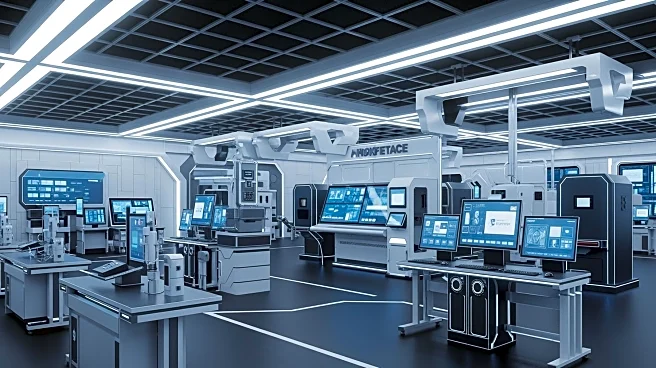What's Happening?
Connecticut's Department of Labor has been awarded an $8 million federal grant to expand workforce training in high-demand industries. The grant, part of the U.S. Department of Labor’s Industry-Driven Skills Training Fund, aims to equip workers with skills
needed in fields such as shipbuilding, advanced manufacturing, healthcare, information technology, and construction. The initiative involves partnerships between workforce development boards, employers, and educators to design training programs tailored to industry needs. State Labor Commissioner Danté Bartolomeo emphasized the importance of these funds in maintaining a highly trained and competitive workforce. The grant will support various training opportunities, including on-the-job training, pre-apprenticeship, and registered apprenticeship programs, with a focus on integrating artificial intelligence across industries.
Why It's Important?
This federal grant is crucial for Connecticut's economic development, as it addresses the growing demand for skilled workers in key industries. By investing in workforce training, the state aims to enhance its competitiveness and support economic growth. The initiative is particularly significant in the context of technological advancements, such as AI, which are transforming industries and creating new opportunities. The grant helps ensure that Connecticut's workforce is prepared to meet the challenges and opportunities of a rapidly changing economic landscape. It also highlights the importance of collaboration between government, industry, and educational institutions in fostering a skilled and adaptable workforce.
What's Next?
The disbursement of the grant funds has been delayed due to a federal government shutdown, with no timeline set for when the money will become available. Once the funds are released, Connecticut's workforce development boards will receive allocations to reimburse employers for training expenses and manage program outcomes. The initiative is expected to lead to the development of new training programs and partnerships, enhancing the state's capacity to meet industry demands. As the program progresses, stakeholders will monitor its impact on workforce readiness and economic growth, potentially influencing future policy decisions and funding allocations.














